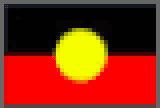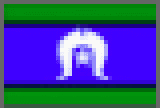Autism Spectrum Quotient AQ
Autism Spectrum Quotient AQ overview
Creator and Context
The Autism Spectrum Quotient (AQ) is a self-assessment tool designed to measure the severity of autism spectrum traits in adults. It consists of 50 questions, each allowing the respondent to indicate the degree to which they agree or disagree with a given statement. This assessment focuses on five different areas: social skills, attention switching, attention to detail, communication, and imagination.
The AQ was developed by Simon Baron-Cohen and his colleagues at the Cambridge Autism Research Centre, first published in 2001. Its creation was driven by the need for a quick, reliable, and quantifiable measure of autism spectrum traits in adults.
Presenting Conditions
The AQ is used to assess traits commonly associated with the autism spectrum, including difficulties in social interaction, repetitive behaviors, and highly focused interests. It is particularly useful in identifying autism spectrum traits in individuals who may not have been diagnosed in childhood.
Administration
The AQ is a self-administered questionnaire. Each item is a statement that the respondent rates using a 4-point Likert scale (definitely agree, slightly agree, slightly disagree, definitely disagree). It can be administered in a clinical setting or completed independently by the individual.
Desired Audience
The AQ is primarily targeted at adults with suspected autism spectrum conditions. However, it can also be used for adolescents and older children with the proper guidance.
Clinicians should use the AQ as an initial screening tool. It is not diagnostic but can guide further, more comprehensive assessments. It can be particularly useful in settings where quick screening is beneficial, such as primary care or general mental health services.
Considerations
The AQ is not a diagnostic tool on its own. It should be used in conjunction with other assessments and clinical evaluations. Cultural and linguistic differences should be considered, as the AQ was developed in the UK and may not be directly applicable in all cultural contexts.
How to score the Autism Spectrum Quotient AQ
Conducting the assessment
Respondents complete the questionnaire by reading each statement and selecting the response that best describes their feelings or behaviors. The questionnaire can be completed in approximately 15-20 minutes.
Interpretation
Each item is scored as 1 point if the respondent's answer indicates an autism spectrum trait. The maximum score is 50, with higher scores indicating a higher likelihood of autism spectrum traits.
Scores of 32 or above are considered indicative of significant autism spectrum traits. However, scores should be interpreted in the context of a full clinical assessment.
Clinical Considerations
Clinicians should use the AQ as part of a broader assessment process. It is important to consider the individual's overall functioning, including their social, occupational, and personal context.
Autism Spectrum Quotient AQ use cases
The AQ can be helpful in identifying adults who may have undiagnosed autism spectrum conditions. It is also useful in research settings to categorize traits among different populations. In educational settings, it can assist in identifying students who may benefit from additional support.
Category
Autism
Research Summary
Baron-Cohen, S., Wheelwright, S., Skinner, R., Martin, J., & Clubley, E. (2001). The Autism Spectrum Quotient (AQ): Evidence from Asperger Syndrome/high-functioning autism, males and females, scientists and mathematicians. Journal of Autism and Developmental Disorders, 31(1), 5-17.
Hoekstra, R. A., Bartels, M., Cath, D. C., & Boomsma, D. I. (2008). Factor structure, reliability and criterion validity of the Autism-Spectrum Quotient (AQ): A study in Dutch population and patient groups. Journal of Autism and Developmental Disorders, 38(8), 1555-1566.
Woodbury-Smith, M. R., Robinson, J., Wheelwright, S., & Baron-Cohen, S. (2005). Screening adults for Asperger Syndrome using the AQ: A preliminary study of its diagnostic validity in clinical practice. Journal of Autism and Developmental Disorders, 35(3), 331-335.










